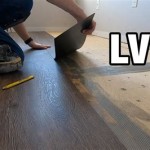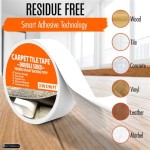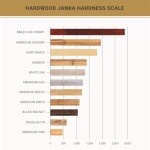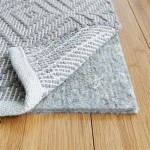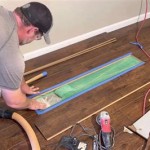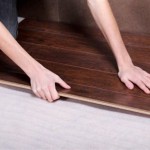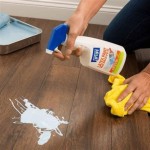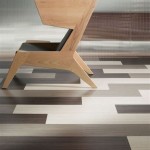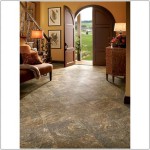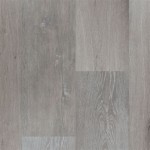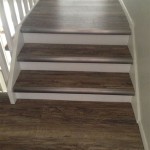Engineered Wood vs. Solid Wood Flooring Costs in 2024
The decision between engineered wood flooring and solid wood flooring is a significant one for homeowners and builders alike. Both options offer aesthetic appeal and can add considerable value to a property. However, their construction, performance characteristics, and, crucially, their costs differ substantially. Understanding these differences is essential for making an informed decision that aligns with budgetary constraints and specific needs. This article will explore the cost factors associated with both types of flooring in 2024, providing a comparative analysis to aid in the selection process.
The cost of flooring extends beyond the initial purchase price. Installation, maintenance, and long-term durability all contribute to the overall expenditure. Solid wood flooring, traditionally considered the premium option, is composed of planks milled from a single piece of hardwood. Engineered wood flooring, conversely, consists of a thin veneer of hardwood bonded to multiple layers of plywood or fiberboard. This construction impacts not only the price but also the flooring’s resilience to moisture and temperature fluctuations.
Several overarching factors influence flooring costs in 2024. These include material availability, manufacturing processes, transportation expenses, and local market conditions. Inflation, global supply chain disruptions, and fluctuating demand can all contribute to price volatility. Furthermore, the species of wood chosen, the complexity of the installation, and the chosen finishing options can significantly affect the final cost. In considering these variables, a comprehensive comparison of engineered and solid wood flooring costs becomes essential.
Raw Material Costs and Manufacturing
The most fundamental difference in cost stems from the raw materials and manufacturing processes involved in creating each type of flooring. Solid wood flooring requires large, high-quality hardwood trees. The rarity and availability of certain species, such as exotic hardwoods like Brazilian Cherry or Ipe, directly impact their price. The milling process, which involves cutting and shaping the wood into planks, also contributes to the overall cost. Waste is a significant factor, as imperfections or knots in the wood can render portions unusable, increasing the cost per usable plank.
Engineered wood flooring, on the other hand, utilizes a relatively thin layer of hardwood veneer, which is adhered to a core of plywood, high-density fiberboard (HDF), or medium-density fiberboard (MDF). This allows manufacturers to maximize the yield from each hardwood tree, reducing the raw material cost per square foot. The core materials are also generally less expensive than solid hardwood. The manufacturing process involves bonding these layers together under heat and pressure, a process that is typically more efficient and generates less waste than milling solid wood planks.
The thickness of the hardwood veneer on engineered wood flooring also plays a role in the cost. A thicker veneer allows for more refinishing opportunities over the flooring's lifespan, increasing its longevity and, consequently, its value and price. Thinner veneers, while less expensive initially, may limit future refinishing options and reduce the overall lifespan of the floor.
Therefore, when comparing material and manufacturing costs, engineered wood flooring generally presents a more cost-effective option upfront due to the efficient use of hardwood and the relatively inexpensive core materials. However, the specific quality and thickness of the veneer within the engineered wood product significantly impacts its price.
Installation Costs and Labor
Installation costs represent a significant portion of the total flooring expenditure. The complexity of the installation process, the condition of the subfloor, and the chosen installation method all influence labor costs. Solid wood flooring typically requires a more skilled installer and a more time-consuming process compared to engineered wood flooring.
Solid wood flooring is usually installed by nailing or stapling it directly to a wooden subfloor. This method requires precise alignment and careful attention to detail to ensure a uniform and aesthetically pleasing result. Moreover, solid wood flooring is susceptible to expansion and contraction with changes in humidity, necessitating expansion gaps around the perimeter of the room and careful consideration of the wood's acclimatization period before installation. These factors contribute to higher labor costs.
Engineered wood flooring offers more versatile installation options. It can be nailed, stapled, glued, or even floated over a subfloor. Floating installations, where the planks are clicked together without being attached to the subfloor, are particularly popular for their ease and speed of installation, contributing to lower labor costs. The stability of engineered wood, due to its multi-layered construction, makes it less prone to expansion and contraction, simplifying the installation process and reducing the need for extensive acclimatization.
Therefore, while the material costs for solid wood flooring may be higher, the labor costs associated with its installation further amplify the price difference. Engineered wood flooring, with its simpler and more versatile installation methods, generally offers a more budget-friendly option in terms of labor costs.
Long-Term Costs and Maintenance
The long-term costs associated with flooring extend beyond the initial purchase and installation. Maintenance requirements, refinishing potential, and durability all contribute to the overall lifetime expenditure. While solid wood flooring typically requires more maintenance, it also boasts a longer lifespan and greater refinishing potential, potentially offsetting the initial cost difference over time.
Solid wood flooring requires regular cleaning, including sweeping or vacuuming, to prevent the accumulation of dirt and debris. It is also susceptible to scratches, dents, and water damage. Refinishing, which involves sanding down the surface and applying a new coat of finish, can restore the floor to its original beauty and extend its lifespan. Solid wood flooring can typically be refinished multiple times, making it a durable and long-lasting investment.
Engineered wood flooring also requires regular cleaning but is generally more resistant to moisture and temperature fluctuations than solid wood. The durability of engineered wood flooring depends on the thickness of the veneer and the quality of the core material. Thicker veneers can be refinished, although typically fewer times than solid wood. The core material is susceptible to water damage if exposed for extended periods, potentially compromising the structural integrity of the floor.
The long-term cost comparison between engineered and solid wood flooring depends on several factors, including the quality of the engineered wood product, the level of maintenance provided, and the frequency of refinishing. While solid wood flooring may require more initial investment and ongoing maintenance, its longevity and refinishing potential can make it a cost-effective option over the long term. Engineered wood flooring, with its lower initial cost and relative ease of maintenance, can be a more budget-friendly choice, particularly in environments with high humidity or temperature fluctuations. However, the quality and thickness of the veneer is paramount in determining its long-term value. Replacing any type of flooring prematurely due to damage or wear is a significant cost factor that should be considered.

Hardwood Vs Engineered Wood Flooring Which Is Better Bessemeter

Engineered Wood Vs Hardwood What S The Difference

Engineered Wood Vs Hardwood What S The Difference

Contractor For Engineered Wood Flooring Top Tips 2024

Solid Vs Engineered Hardwood Flooring Olde Wood Ltd

10 Of The Best Engineered Wood Flooring In 2024 And Beyond Blog

Solid Wood Vs Engineered Auten Wideplank Flooring

Cost Of Laying Engineered Wood Flooring With Diffe Patterns Major

Engineered Hardwood Flooring Installation Cost 1 Best Guide

Laminate Wood Flooring Vs Engineered
See Also
